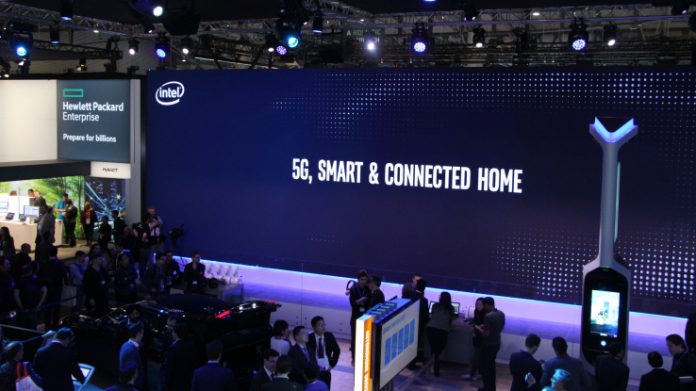Intel lost the last battle for smartphones. In May, the company quietly announced that it was canceling plans for its Broxton mobile processor, effectively acknowledging that it couldn’t compete with Qualcomm and in-house chips from powerhouses like Apple and Samsung.
But the war is far from over, and with 5G standardization over the horizon, the company believes it has found a way back into the massive global market. In an interview at Mobile World Congress this week, Robert Topol, the chipmaker’s GM of 5G Business and Technology, admitted that Intel canceled major pieces of its mobile roadmap in part due to being “late for LTE.”
According to Topol, the company has used the failure to regroup, both in terms of existing LTE technologies and emerging 5G. By most accounts, the next-generation wireless standard is set to be approved around the middle of next year. If the timeline holds, we can expect the first devices sporting the technology to begin arriving late-2019/early 2020, a time frame Topol says lines up perfectly with planned major play for the space.
Smartphones are one of the key reasons the company has been pushing so heavily on 5G at shows like MWC, as it provides a potential way to make up for a lot of lost ground in the ubiquitous computing space. “We used that moment to really get aggressive about 5G,” Topol says of the company’s unscheduled downtime.
Of course, 5G is about a lot more than just smartphones. Home internet is currently viewed as one of the earliest potential applications for the technology, given the fact that it’s simply easier to deploy wireless to a fixed target.
The company’s MWC booth showcases how large of a play the technology will ultimately be for the chipmaker. “We’re making sure the prototypes and these early chipsets are available to anybody,” Topol says. “We’ve talked with mobile handset makers, automobile manufacturers, all of them. That’s the goal, for Intel to be very aggressive. If we see smartphone growth explode with 5G, we’re ready.”









